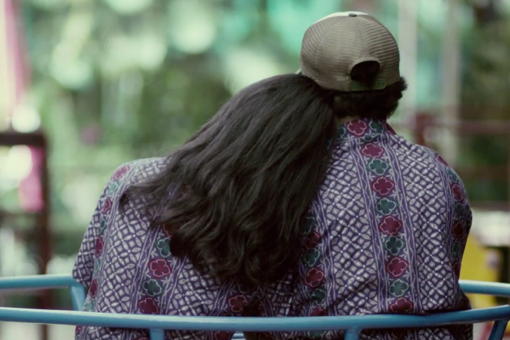By Natalia Lusinski · January 29, 2013

Imagine falling in love with someone you cannot see, or them with you. This is exactly what happens in the moving What They Don’t Talk About When They Talk About Love, the first Indonesian film to play at Sundance. It portrays the relationships between blind and deaf young adults at a school for the visually impaired.
Writer/director Mouly Surya’s movie is a great study in saying a lot with few words; there is barely any dialogue for the first thirty minutes of the film, and it continues to be short on verbosity but rich in reading people’s faces and emotions to convey the coming-of-age love stories.
One example of this is when Diana (Karina Salim), who is partially blind, leaves the school one day to go shopping with her mother. They go up an escalator, not speaking and looking in opposite directions. We immediately get their relationship — we feel the mother’s discomfort in her daughter’s presence, which makes us empathize with Diana.
Back at the school, we see girl-next-door Diana fall in love with a fellow blind classmate, and the ways she tries to get his attention in sensory ways rather than visual (which is fascinating, if you think about it) – like by wearing a perfume he likes.
Another love story involves the sultry student Fitri (Ayushita Nugraha), who begins to have a physical relationship with the very charming and good-looking Edo (Nicholas Saputra), a punk kid who works at the school. Fitri is blind and Edo is deaf, and the two initially fall for one another through writing letters in Braille.
The beautiful, melodic music, by Zeke Khaseli, complements the film throughout. Yet at times, when Surya shows a scene from Edo’s deaf point of view, there is complete silence – no music, no nothing. At first, I think there is a problem with the film, technically, and then I realize it: we’re in Edo’s head, and the quiet is fascinating, albeit a bit frightening. I cannot recall another film that conveys this as well.
There are a few things about the film I have questions about: What do the Braille letters between Fitri and Edo say (as I want to know what connects them aside from sex)? Why is Diana’s mother so uneasy around her? Do any other students have parents, or had they just been dropped off at the school forever?
Also, at one point, the film has a few fantasy sequences, one of which shows Diana being able to see, out of school and in a ballet class, her mother beaming and wanting to put makeup on her, not shunning her the way she did when Diana was blind. These scenes are fascinating vignettes in and of themselves, yet they seem awkwardly placed.
In a Q&A afterwards, Surya is asked what inspired her to do the film. She relays that a cousin of hers is visually impaired. “I grew up with her back home,” Surya says. “I used to drive her to her school… A few years back, I met her again and she was updating her Facebook status on her mobile phone and that… amazed me.” And regarding the meaning of the fantasy sequence, Surya says, “What if? Is it better to become someone who is normal?” She wanted to show an alternate reality, she says.
And, that, she does. And does well.